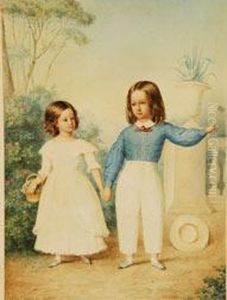Manuel Arbos Y Ayerbe Paintings
Manuel Arbos y Ayerbe was a Spanish artist born in 1873 in Madrid, Spain. Not widely known outside of specialist circles, Arbos was a painter who contributed to the Spanish art scene during the late 19th and early 20th centuries.
Arbos's life and work were situated in a period of Spanish art that was marked by a transition from traditional to modern styles. The late 19th century was a time when Spanish artists were influenced by various European art movements, including Impressionism, Symbolism, and Modernisme. Within this context, Arbos would have developed his artistic skills and personal style.
While there is limited information about Arbos's training and early career, it is common for artists of his time to have attended an academy or studio to learn their craft. These institutions were the primary means by which young artists received formal education in techniques, perspective, anatomy, and the study of the works of past masters.
Throughout his career, Arbos would have participated in local and national exhibitions, which were crucial for artists seeking recognition and patronage. His works likely encompassed both traditional subjects, such as landscapes, portraits, and historical scenes, which were popular at the time, as well as possibly exploring more progressive themes and styles as the art world evolved into the 20th century.
Unfortunately, due to the scarcity of information on Manuel Arbos y Ayerbe, his specific contributions to art movements or significant works are not well-documented. Like many artists of his era, he may not have gained international fame, but he contributed to the rich tapestry of Spanish art history.
Arbos's career would have been affected by the historical events of his lifetime, including the Spanish-American War at the end of the 19th century and the Spanish Civil War in the 1930s. These events often had significant impacts on artists, influencing the themes of their work and their opportunities for patronage and exhibition.
Manuel Arbos y Ayerbe passed away in 1943, leaving behind whatever body of work he had created. His legacy, though perhaps modest in comparison to the giants of Spanish art, reflects the experiences and aesthetic explorations of a working artist in Spain during a period of great change and turmoil.

